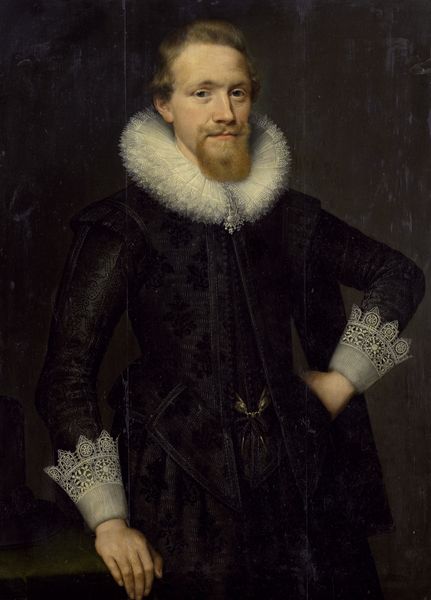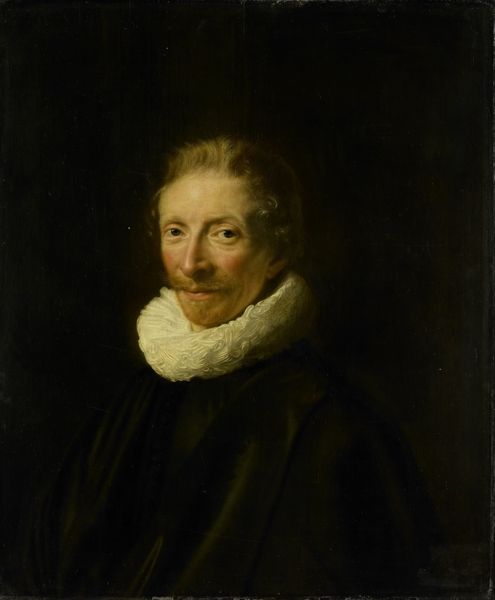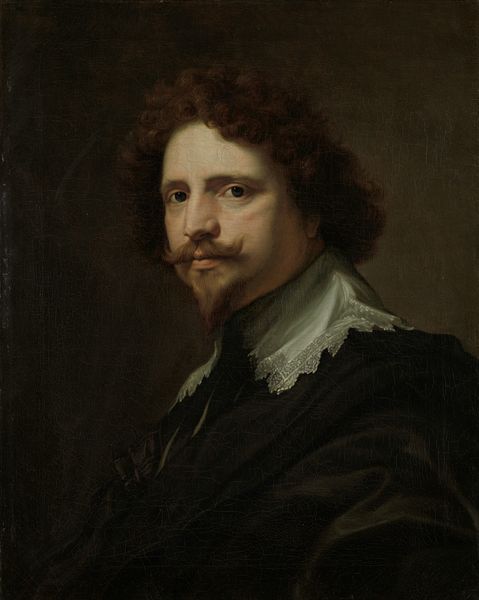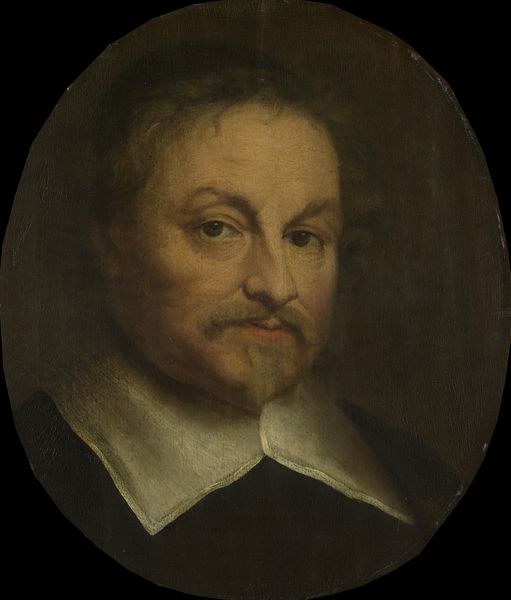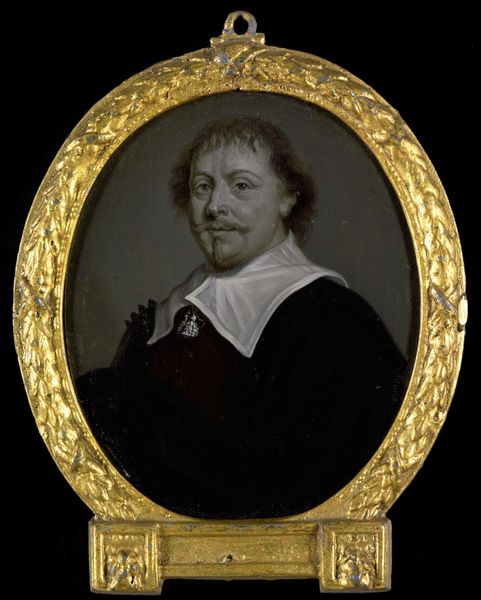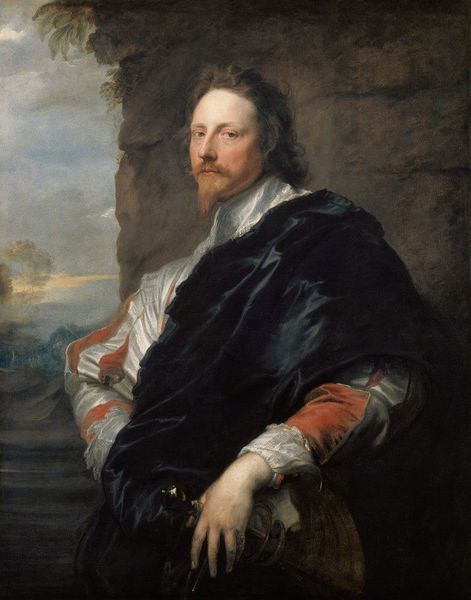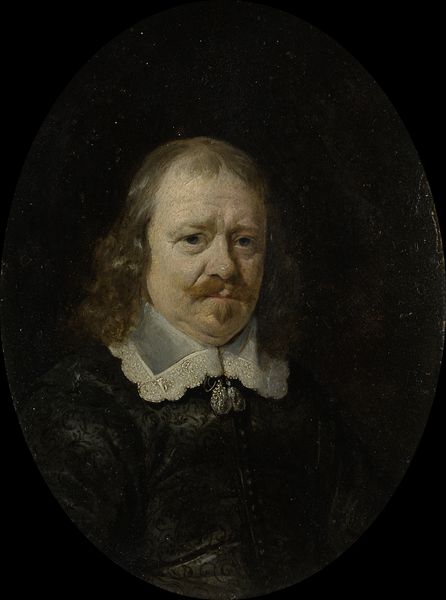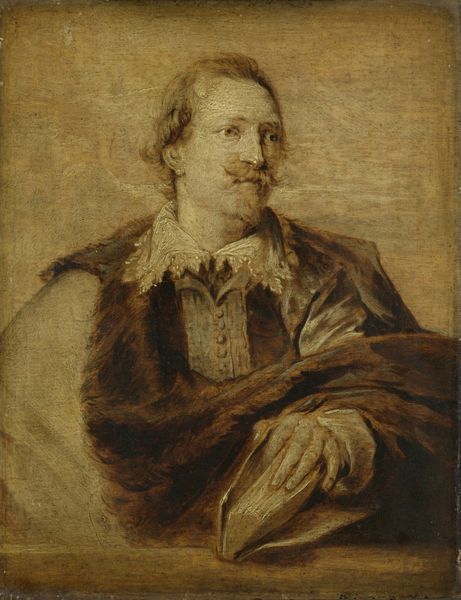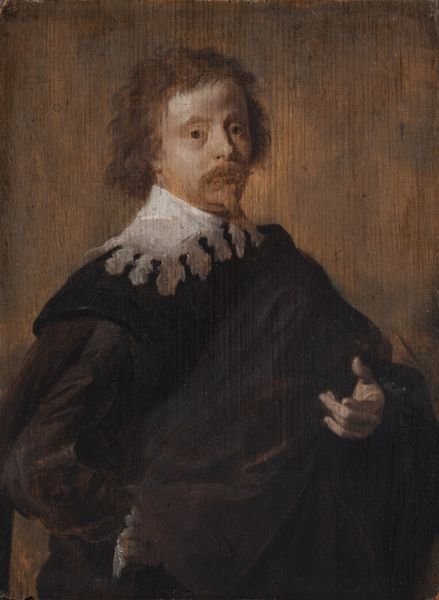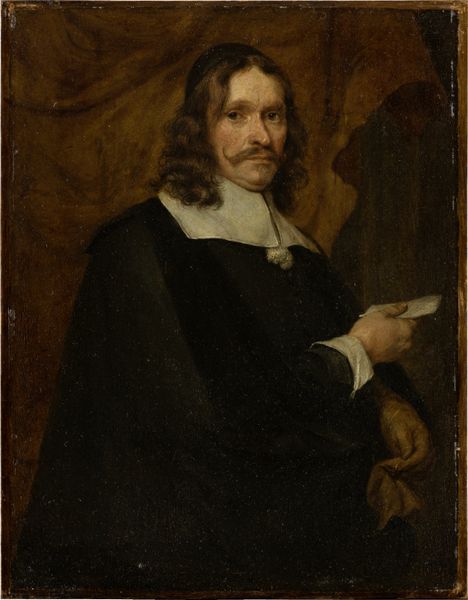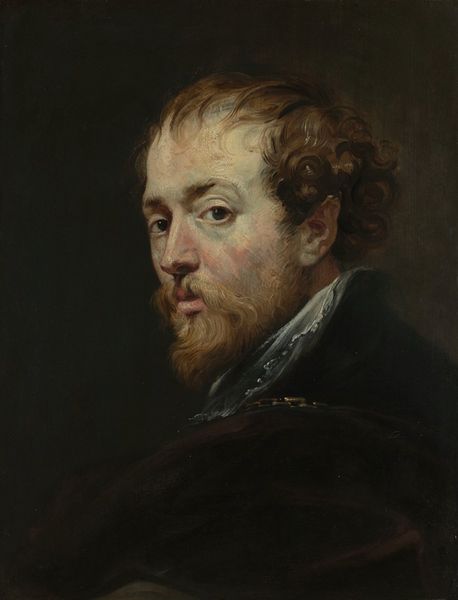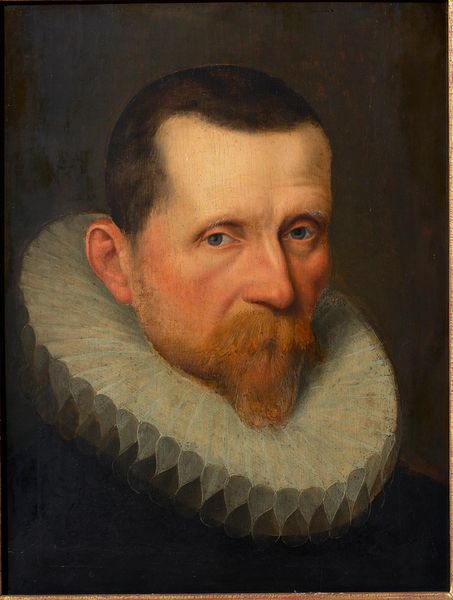
painting, oil-paint
#
portrait
#
baroque
#
portrait
#
painting
#
oil-paint
#
history-painting
#
realism
Dimensions: support height 75 cm, support width 59 cm, outer size depth 10 cm
Copyright: Rijks Museum: Open Domain
Editor: Here we have Anthony van Dyck's "Portrait of a Man," painted around 1620. It's an oil painting currently housed in the Rijksmuseum. The fellow looks rather…intense, doesn’t he? Almost melancholic. I’m curious, what strikes you most when you look at this painting? Curator: It's the subtlety, really. Van Dyck manages to capture such depth of character with such restrained brushwork. It's almost as if he's not just painting a likeness, but peeling back layers of the soul, ever so delicately. Do you see how the light catches the edge of his lip? It's almost a sigh, painted onto the canvas. Melancholy, yes, but perhaps also…resignation? Or is that just me projecting my Tuesday mood onto a dead guy? Editor: No, I see that too! The slight downturn is very expressive. I'm interested in the period—the Baroque, right? Does that influence the feel of the work? Curator: Absolutely! The Baroque loved drama, but here, it's a very internalized drama. It's not Bernini's ecstatic Saint Theresa; it's a quiet storm brewing inside this gentleman. And Van Dyck’s handling of light –notice how it pools in the folds of the cloak – creates that sense of simmering intensity, like a darkened stage lit by a single spotlight. Editor: That makes total sense. And it is so amazing that we can find that complexity looking at an artwork made so many years ago. Curator: Indeed! Van Dyck, I suspect, would’ve approved of us having this chat, centuries after he mixed those paints. And I can go on and on. Now tell me this - does seeing it this way makes it…intriguing, different from your initial reaction? Editor: Definitely! Seeing how those nuances can be created on purpose... thank you so much for this analysis, you've provided the most incredible insights today.
Comments
No comments
Be the first to comment and join the conversation on the ultimate creative platform.
